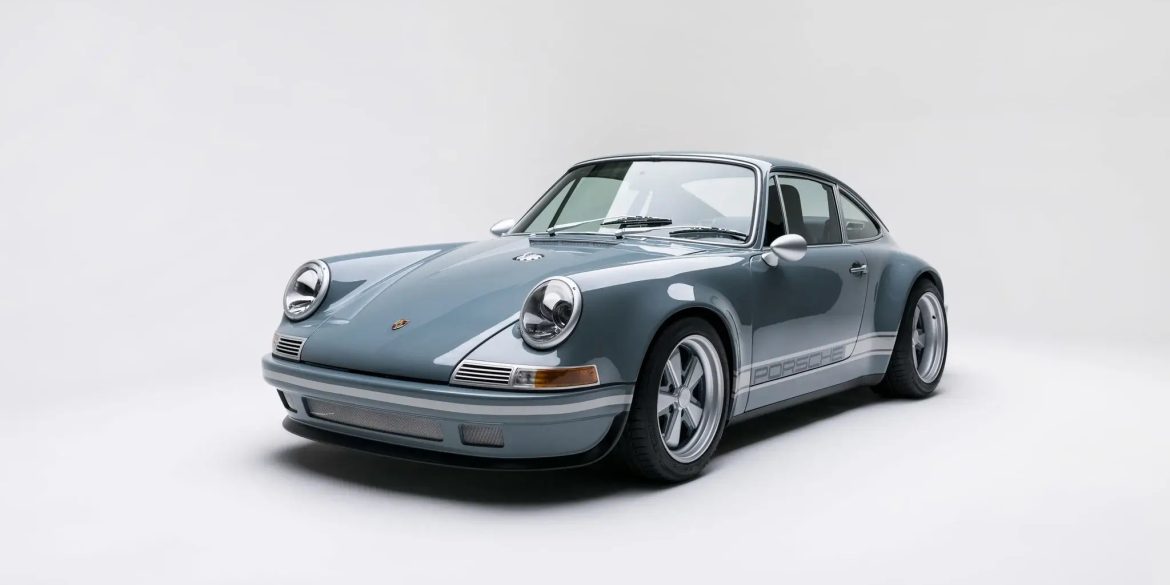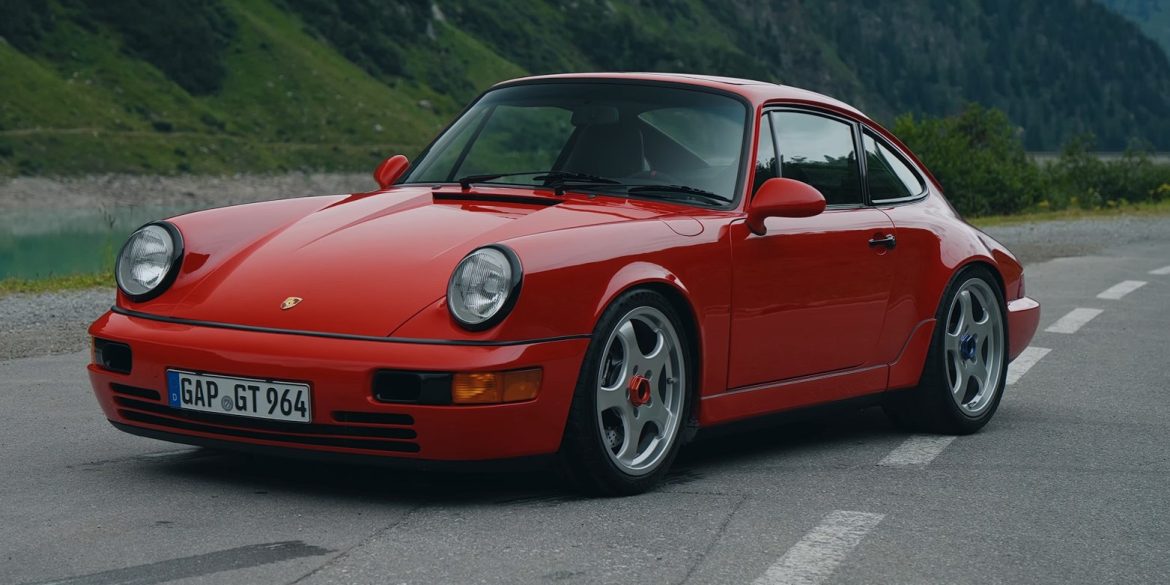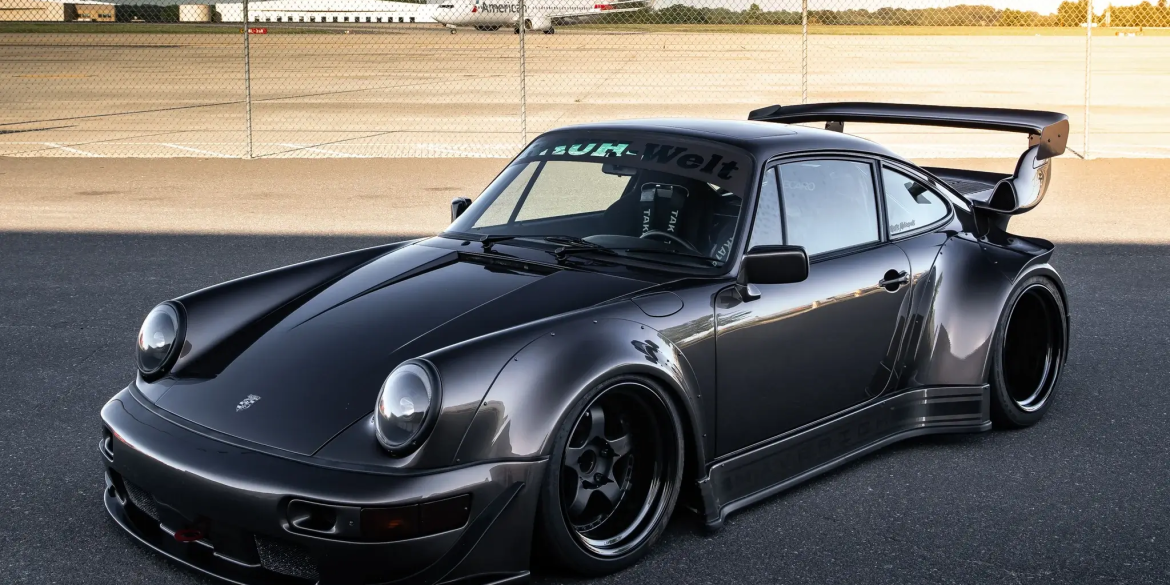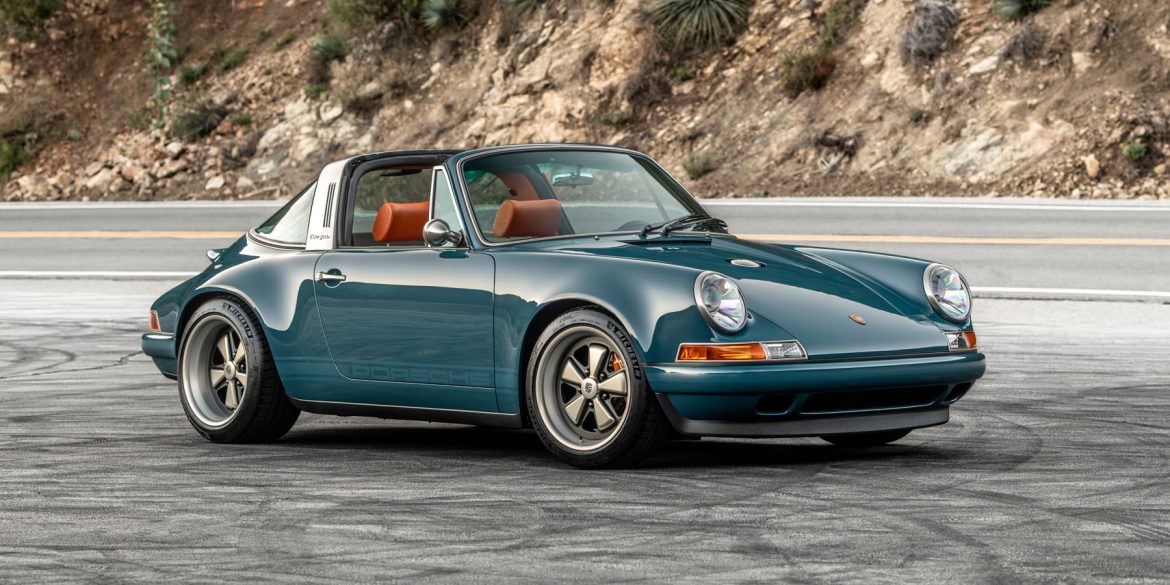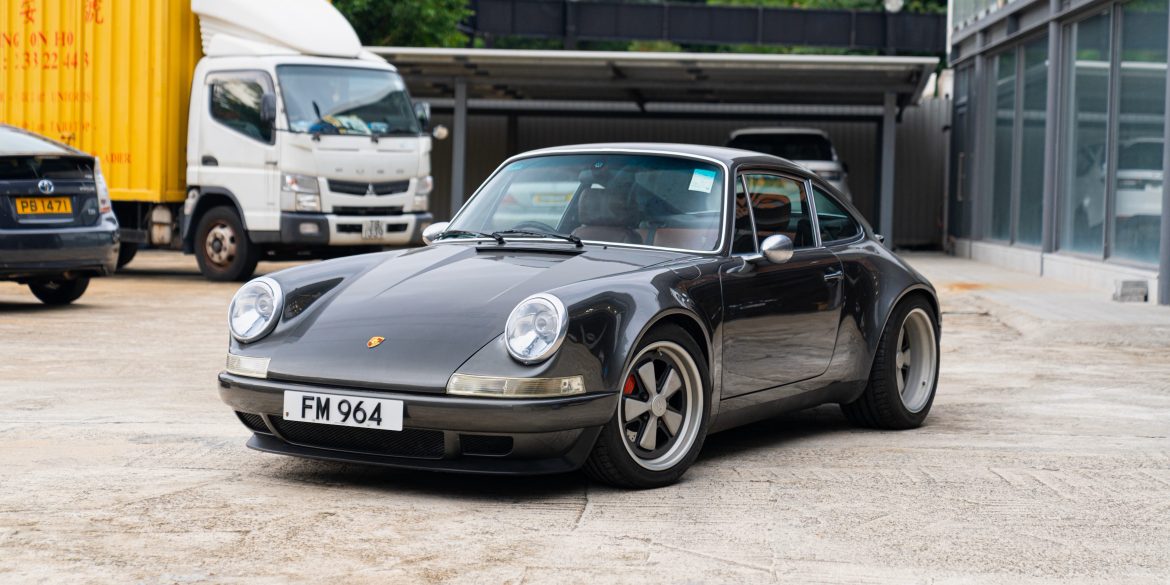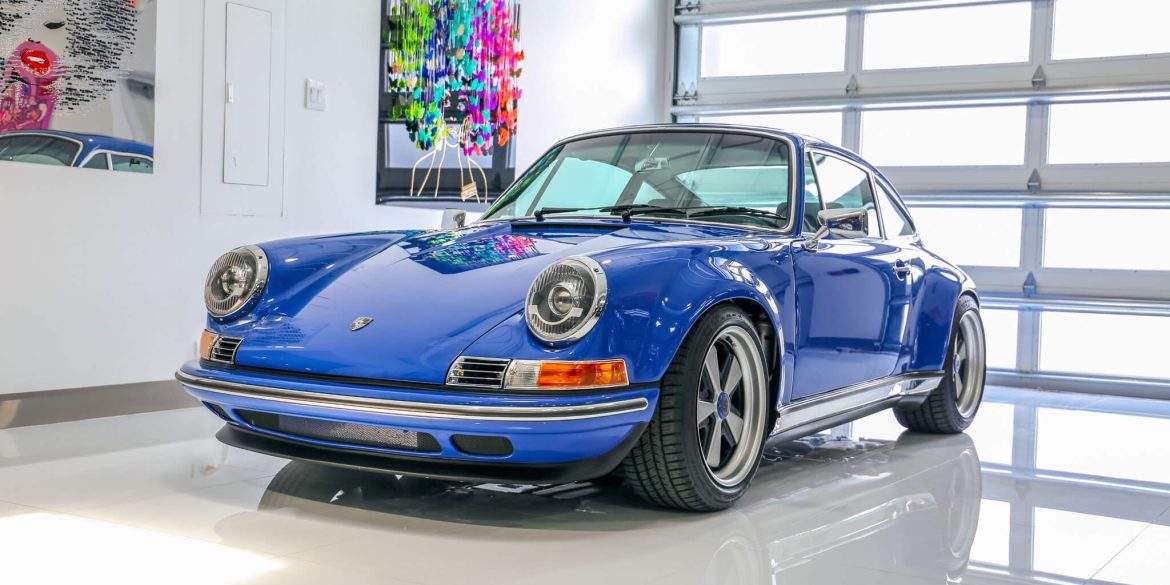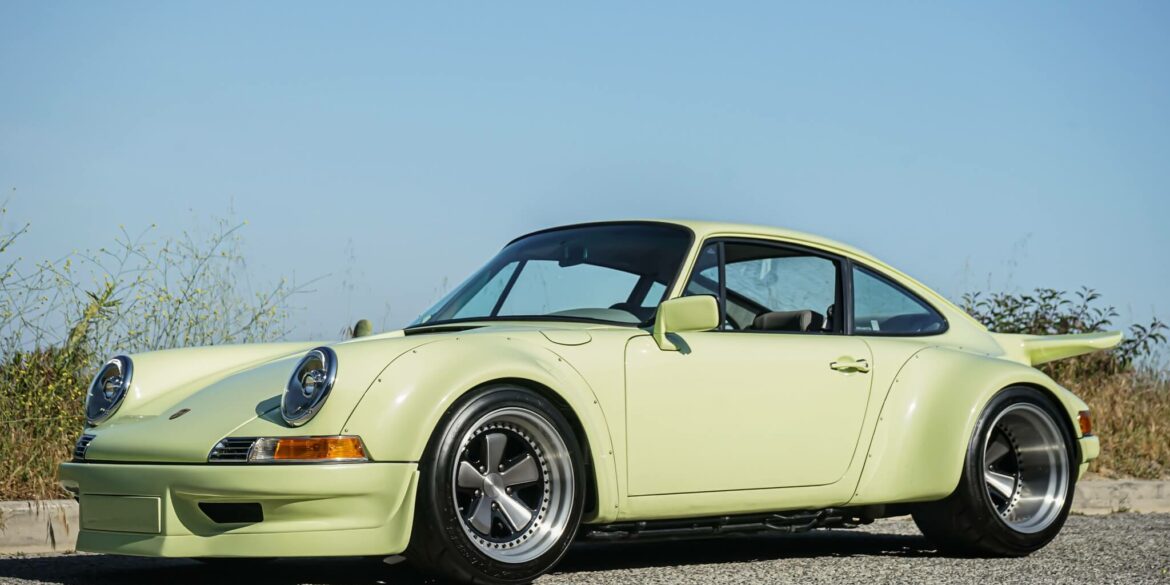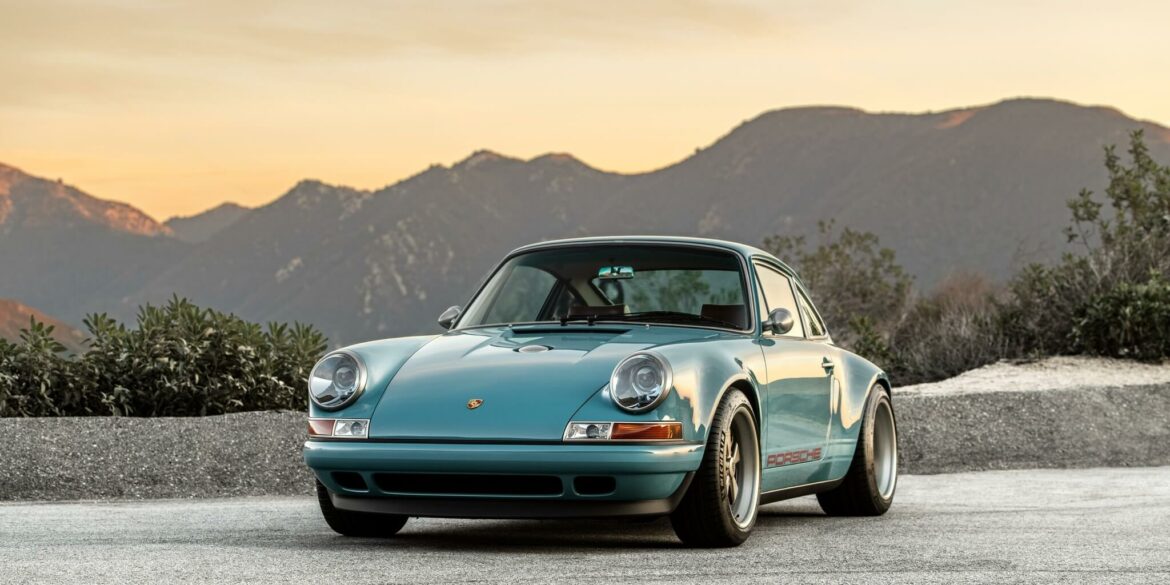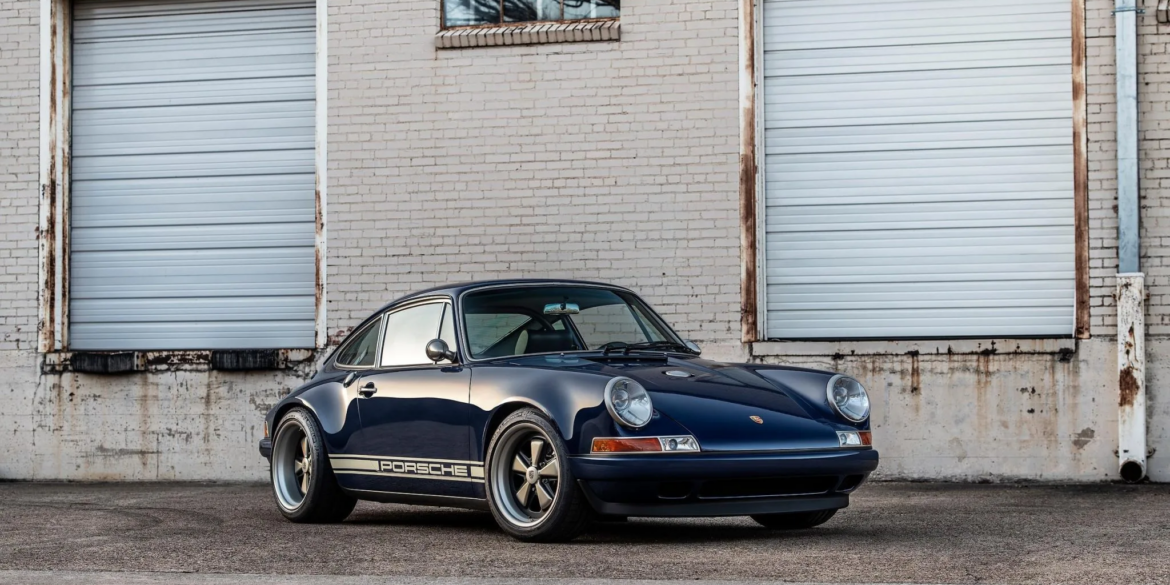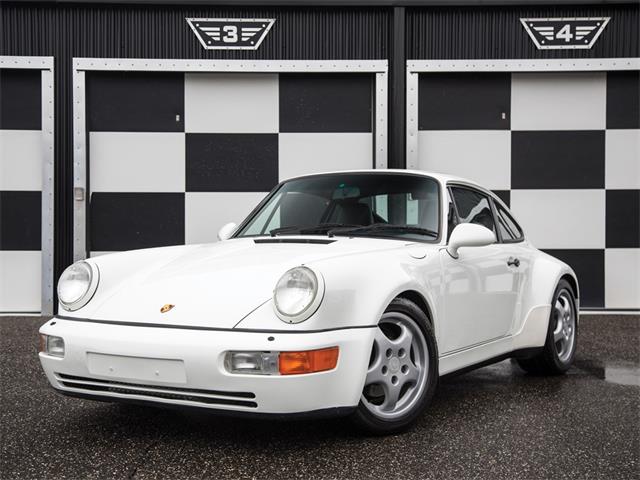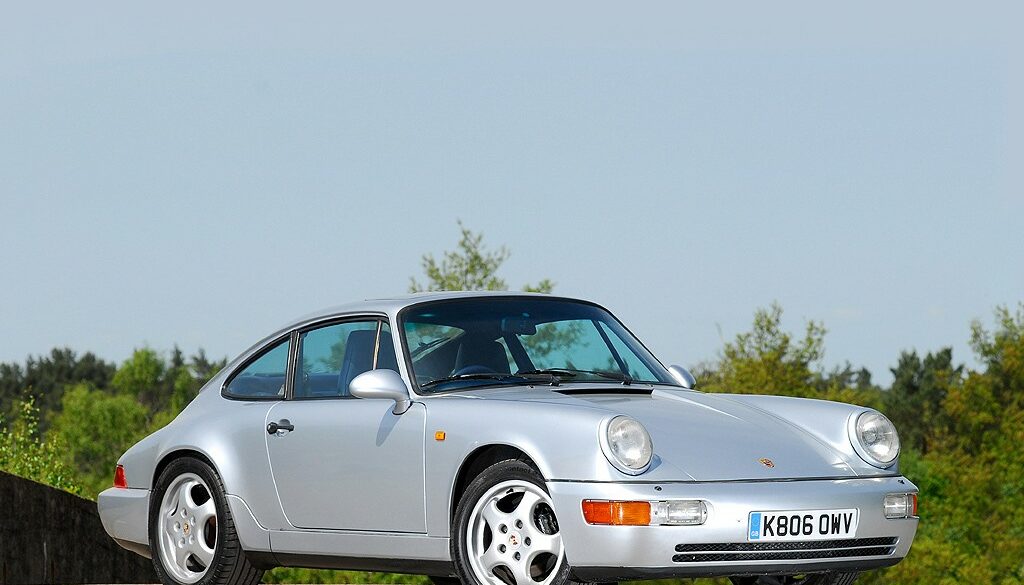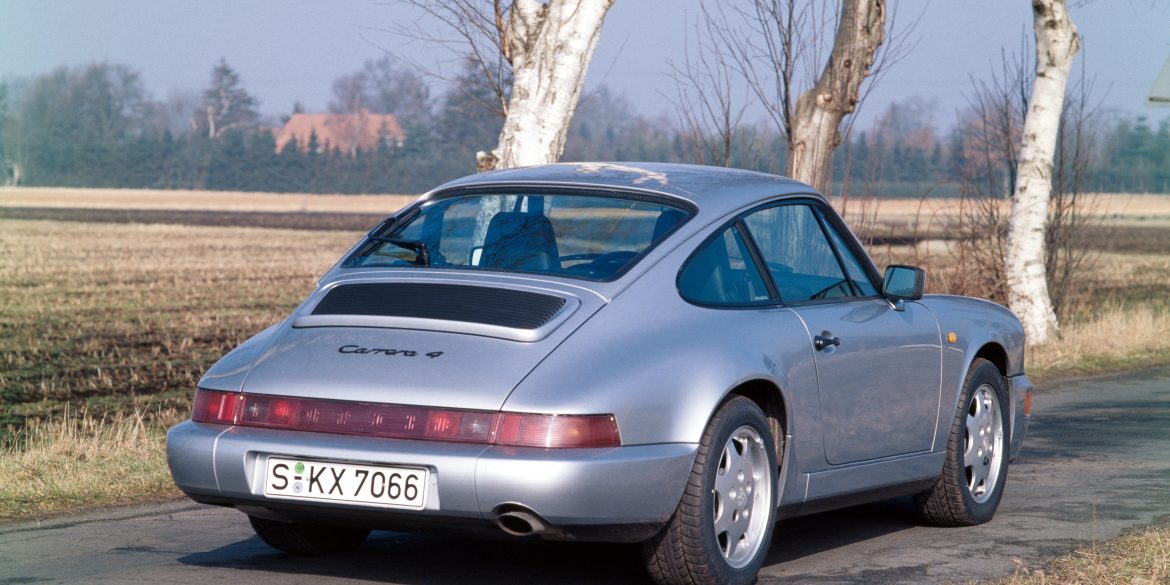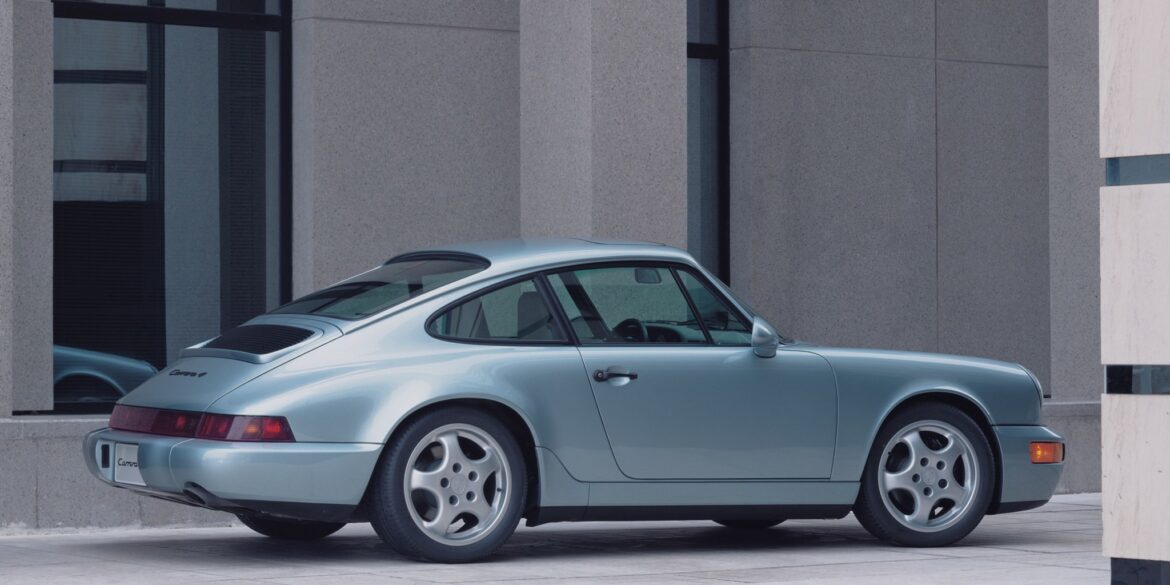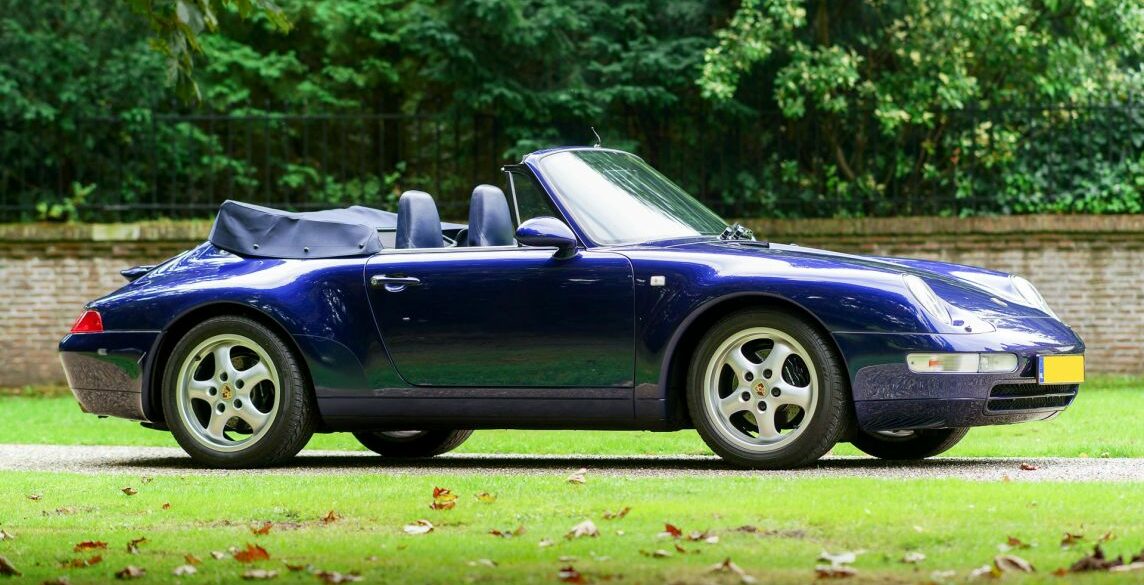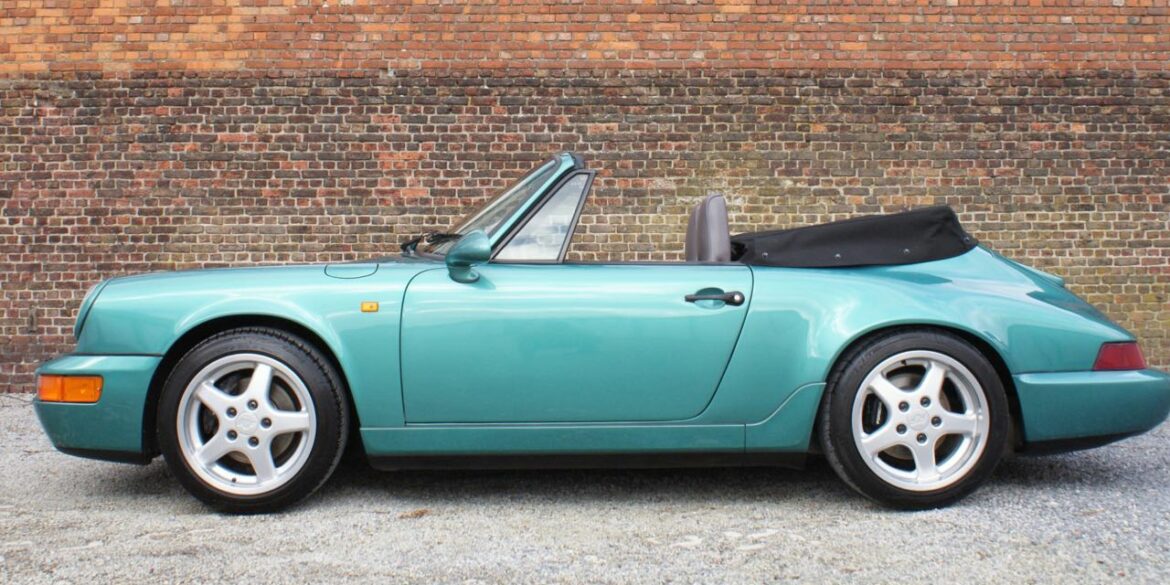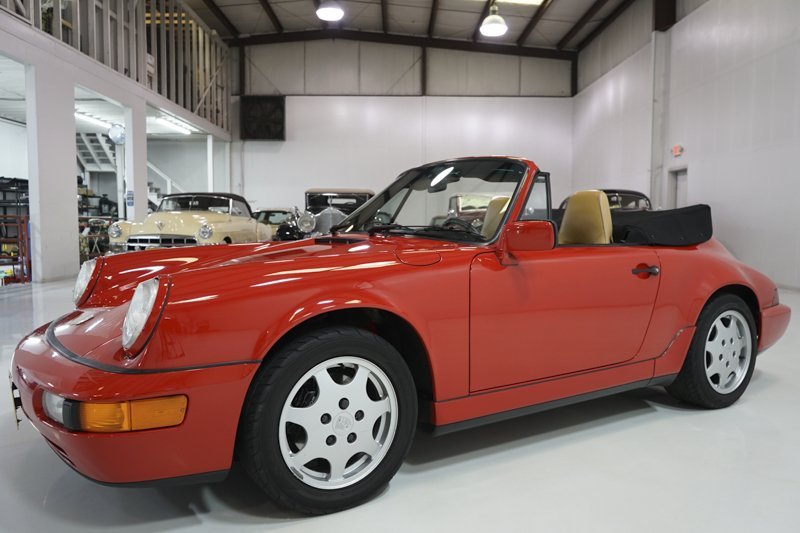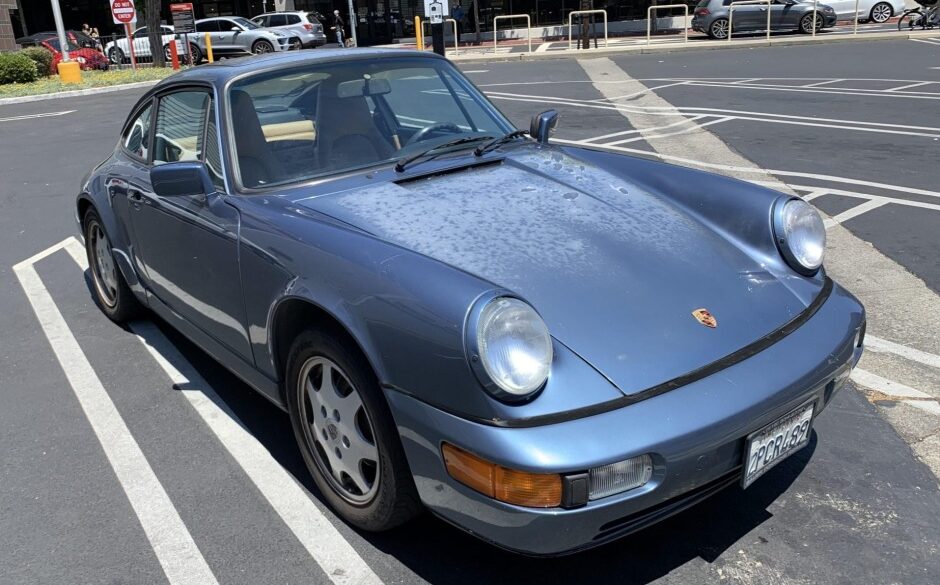Singer Vehicle Design is at the forefront of restoring and reimagining 1989–1994 Porsche 911s based on the 964 chassis. One exceptional example of their creation is the “Blueberry,” a 1991 Porsche 911 Carrera 4 Targa transformed by Singer Vehicle Design that is also currently up for sale on Broad Arrow’s...
Few dispute the Porsche 911’s status as the ultimate sports car, having evolved continuously for over 60 years—from its original 2.0-liter coupe to today’s high-performance variants. Still, Los Angeles musician and Porsche fan Rob Dickinson believed there was more potential. In 2009, he founded Singer, transforming the air-cooled 964 into...
Commissioned in 2017 by longtime Singer client Scott Blattner, the Dynamics and Lightweight Study (DLS) sought to push the limits of the 964-generation Porsche 911 using advanced lightweight materials. Limited to just 75 units, the DLS extensively employs carbon fiber, magnesium, and titanium, resulting in a curb weight of just...
This 1992 Porsche Carrera 4 has undergone a GS 964 restoration by GS Manufaktur in Germany, blending classic Porsche design with modern 964 performance. It features carbon composite bodywork, a tailor-made interior, and performance upgrades, including a 3.8L RS-spec engine, enhanced brakes, and suspension. The custom CAD-designed bodywork is primarily...
The Porsche 964, the third generation of the iconic 911 lineup, is a beloved classic in the automotive world. Highly sought after by both collectors and modders, the 964 holds a special place among enthusiasts—especially this unique version recently driven by Henry Catchpole in a new video from Hagerty on...
This 1990 Porsche 964 Carrera 4 Coupe, dubbed “Maverick,” holds a special place in RWB history. Built in 2017 by the renowned Akira Nakai himself, it became the first RWB creation to roll out of his North Carolina workshop. Drawing inspiration from Nakai’s personal car “Stella,” the “Maverick” is finished...
This bespoke version of the ’30 Jahre’ model comes with the wide body of the 964 Turbo combined with a 3.6-liter Carrera engine, retractable spoiler, and four-wheel-drive. This rare example is one of only six sporting an Oak Green Metallic paint and Sherwood Green interior. It rolls on 17-inch ‘Cup’ alloy...
Theon Design is rapidly establishing itself as a prominent figure in the realm of 911 restomods, specializing in the 964-generation Porsche 911 from 1989 to 1994. Founded by Englishman Adam Hawley, who brings an impressive technical background to the table, having served as a designer for over 15 years prior...
The 300th Porsche 911 reimagined by Singer has been completed in California. The 1990 Porsche 911 was restored in collaboration with its owner, who named their car the ‘Sotto’ commission. This car exemplifies Singer’s personalization services and love affair with the 911. Its specification represents requests made by its owner....
This Porsche RUF 911 RCT, from the 964 era, serves as the origin of the RUF RCT model and was formerly owned by Alois Ruf Junior. Among the approximately 100 RCTs produced, this one remains to be the only wide body example featuring four-wheel drive. It is equipped with a...
Singer Vehicle Design, founded in 2009 by former Catherine Wheel frontman Rob Dickinson and based in Los Angeles, specializes in performance-based customizations of 964-series 911s. In their process, each car is stripped down to its steel unibody, receiving welding reinforcements before being outfitted with carbon-fiber panels, including the fenders, bumpers,...
Theon Design is swiftly establishing itself as one of the prominent names in the realm of 911 restomods, specializing in the 964-generation Porsche 911 from 1989 to 1994. Founded by Englishman Adam Hawley, who brings an impressive technical background to the table, having served as a designer for over 15...
Starting with a European-market 964 Carrera 4 that retains its original numbers, this 1991 model underwent an extensive custom nut-and-bolt restoration spanning over 3,500 hours by Abreu Motors. The restoration included a comprehensive full-metal wide-body conversion, the installation of backdated bumpers, and the integration of new suspension featuring Bilstein PSS10...
Parker Nirenstein of the YouTube channel Vehicle Virgins gives us a first-person perspective of what it’s like to drive a 1991 RWB Porsche. This special edition started as a 1991 Carrera 4 on the 964 chassis but underwent a complete transformation by the legendary Akira Nakai, in collaboration with RDBLA....
Get ready to add a unique air-cooled 911 from the early 1990s to your Porsche collection as Broad Arrow Auctions will be auctioning a striking 1990 Carrera 4 next month as part of the German marque’s 75th anniversary event. This is a one-of-a-kind coupe that was once owned by Porsche...
The 1990 Porsche 911 Carrera 4 underwent a comprehensive restoration and backdate by Abreu Motors. It features a Guards Red repaint, custom all-metal backdate widebody kit, a custom-built 3.9L engine by Elio Metri, rebuilt manual transmission, custom exhaust, refreshed undercarriage/suspension, Bilstein coilovers, 993 “Big Red” brakes, custom 17-inch Braid Fuchs...
This 1991 Porsche 964 Carrera 4 is an exceptional, one-of-a-kind build that was commissioned to RWBLA, a team of experts with years of experience. The car underwent a Super Wide Body conversion, with custom RWB bodywork hand-fitted by Nakai San. The car is finished in a stunning Lido Gold 3-stage...
This is a Singer reimagined Porsche 911 called “Dartmouth Commission”. The car started as a 1989 Porsche 964 Carrera 4 Coupe which was disassembled and media blasted for rust prevention. The car has a Delicate Blue finish with optional features like nickel-plated brightwork, painted rear bumperettes, and 17″ forged aluminum...
This 1991 Porsche 964 Carrera 4 was restored by GS Manufaktur in Germany, serving as the original prototype for the Apparatus GS 964 backdate. The car features a customized body with a long-hood nose section and custom bumpers made from fiberglass and carbon fiber, finished in Graphite Grey with blue...
The latest bespoke Porsche 911 (964) commission to come out of Theon Design’s Oxfordshire workshops has been unveiled – the ITA001, created for a Milanese collector. This fully-restored and enhanced Porsche 911 has a featherweight all-carbon body, semi-active suspension, and a roaring, naturally aspirated 4.0-liter flat-six engine. Like all Theon...
Factory recommissions the famous Porsche 959 Paris-Dakar The recommissioning has been carried out over the past few months by the Porsche Heritage and Museum team together with their colleagues from Porsche Classic. A car that can survive 8,700 miles in the deserts and savannahs of Africa can go anywhere in...
Singer Vehicle Design was founded in 2009 with the purpose of preserving the legendary air-cooled Porsche 911. The level of attention to detail and engineering that goes into the work they’ve done on each Singer vehicle is absolutely stunning to the point that you can call each model, a masterpiece....
Live now on PCarMarket is a one-of-a-kind Porsche 911 Classic Reimagined by Singer dubbed as “Dartmouth Commission”. Featuring a Delicate Blue finish complemented by custom red woven leather interior, it comes with a hand-built 4.0L flat-six made by Ed Pink Racing Engines in California. The car also boasts a host...
Model year 1994. Carrera 4 Wide-Body for the U.S. Technically there is really no difference between the Carrera 4 Wide-Body and his RoW counterpart. At the front there are the for America usual black impact absorbers beside the fog lights, the frontfenders lack the side indicators, the rear bumper is equipped with the center piece with a small plate section and in the back window of a large third brake light is integrated. Significant differences, it is generally provided in the factory standard equipment.
No Subscription? You’re missing out Get immediate ad-free access to all our premium content. Get Started Already a Member? Sign in to your account here....
No Subscription? You’re missing out Get immediate ad-free access to all our premium content. Get Started Already a Member? Sign in to your account here....
No Subscription? You’re missing out Get immediate ad-free access to all our premium content. Get Started Already a Member? Sign in to your account here....
No Subscription? You’re missing out Get immediate ad-free access to all our premium content. Get Started Already a Member? Sign in to your account here....
No Subscription? You’re missing out Get immediate ad-free access to all our premium content. Get Started Already a Member? Sign in to your account here....
No Subscription? You’re missing out Get immediate ad-free access to all our premium content. Get Started Already a Member? Sign in to your account here....
No Subscription? You’re missing out Get immediate ad-free access to all our premium content. Get Started Already a Member? Sign in to your account here....
No Subscription? You’re missing out Get immediate ad-free access to all our premium content. Get Started Already a Member? Sign in to your account here....
No Subscription? You’re missing out Get immediate ad-free access to all our premium content. Get Started Already a Member? Sign in to your account here....
No Subscription? You’re missing out Get immediate ad-free access to all our premium content. Get Started Already a Member? Sign in to your account here....
No Subscription? You’re missing out Get immediate ad-free access to all our premium content. Get Started Already a Member? Sign in to your account here....
No Subscription? You’re missing out Get immediate ad-free access to all our premium content. Get Started Already a Member? Sign in to your account here....
No Subscription? You’re missing out Get immediate ad-free access to all our premium content. Get Started Already a Member? Sign in to your account here....
No Subscription? You’re missing out Get immediate ad-free access to all our premium content. Get Started Already a Member? Sign in to your account here....
No Subscription? You’re missing out Get immediate ad-free access to all our premium content. Get Started Already a Member? Sign in to your account here....
Test Driving a 1989 Porsche 964 Carrera 4 ...
This was the last generation Targa with traditional removable Targa roof (till 991). The Carrera 4 Targa outsold the Carrera 2 Targa by 2x, making the 4 Targa much rarer and more collectible. In all, only 1,329 units were made. Overall, the Carrera 4 packed almost the same technical specifications as the Carrera 2 model. The Targa top was quite a project to take off (compared to the simple and fast cabriolet process) so be prepared to garage it all the time or spend 20 minutes every time you want to enjoy open top fun.
The Carrera 4 model also launched with a Cabriolet version in 1989 (for 1990 model year). The new 911 generation is introduced in Autumn 1988, but the convertible was not launched until the model year 1990. Alterations to the body include the bumpers and sill tread plates, and the 911 continues to be equipped with an automatically retractable rear spoiler and a cowled underbody. The braking system is fitted with ABS. The 911 (Type 964) also features power-assisted steering for the first time. Like the Coupe, the Cabriolet got the new all-wheel drive system.
The Type 964 911 first launch with an all wheel drive model. It was a serious investment by Porsche in updating the chassis and tech platform. The 964 Carrera 4 was powered by the M64/01 3.6 liter flat six engine, developing 250 bhp and 229 ft/lbs of torque. The objective of the C4’s all-wheel-drive system was not only to provide improved traction but also better handling, especially in the wet and on slippery surfaces. The system sends power front/back in a 31:69 ratio because a 50:50 split would have made the 964 feel like a front-wheel-drive car.





